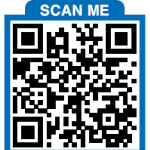Montessori materials and resources
Montessori Research Articles
“Aid to life” – Montessorian pedagogy at the service of the autism spectrum children (Monika Pawluczuk-Solarz). Read online

Bringing the words out of the Montessori box: Towards a Montessori system for enhancing language development from birth to six years (Helen Prochazka). Read online

The theological language of Montessori education andits effects on educational processes in childhood (Judith Neff) Read online

Lisheen Montessori
Address: Lisheen Toys Ltd, Ballyheigue, County Kerry, Ireland Phone: +353 667133436, +353 87275038 Email:lisheenmontessori@gmail.com Website: lisheenmontessori.com
Lets Educate
Description: Irish distributor of Nienhuis Montessori materials Address: Cuffesgrange, Kilkenny. Contact: Michael Feehan Telephone: 056 7728022 Email:info@letseducate.ie Website: www.letseducate.ie
Montessori Door to Door
escription: Beechwood materials, Montessori cabinets, Pink and Blue Language materials and Nienhuis spare parts. Address: 15 James McCormack Gardens, Balydoyle, Dublin D13K0Y2 Contact: Eoghan Barry Email: ask@montessorimaterials.ie Website: https://montessorimaterials.ie/
Montessori Preschool supplies
Description: Montessori Equipment, Furniture, Shelves, Froebel Gifts and Educational Supplies.
Address: Staplestown, Murrintown, Wexford, Ireland
Contact: Brendan McCreary
Telephone: 087 9892 851
Email:info@montessoripreschoolsupplies.ie Website:www.montessoripreschoolsupplies.ie
Montessori Enterprises
Description: Montessori language and cultural materials maker based in the U.K. We sell pre-made language and and cultural materials, durable boxes, objects and components to create your own language materials.
Address: London, UK
Contact Name: Adriana Vanova and Ruth Tesfamariam
Telephone: +44 7940 571663, +44 7949 567828
Email:Montessorienterprises@gmail.com
Website:https://www.montessorienterprises.co.uk/
Lets Grow Early Learning Shop
Address: 15 James McCormack Gardens, Baldoyle, Dublin D13K0Y2
Contact Name: Eoghan Barry
Telephone: 087-7959015
Email: sales@letsgrow.ie
Website:https://www.earlylearningshop.ie/
